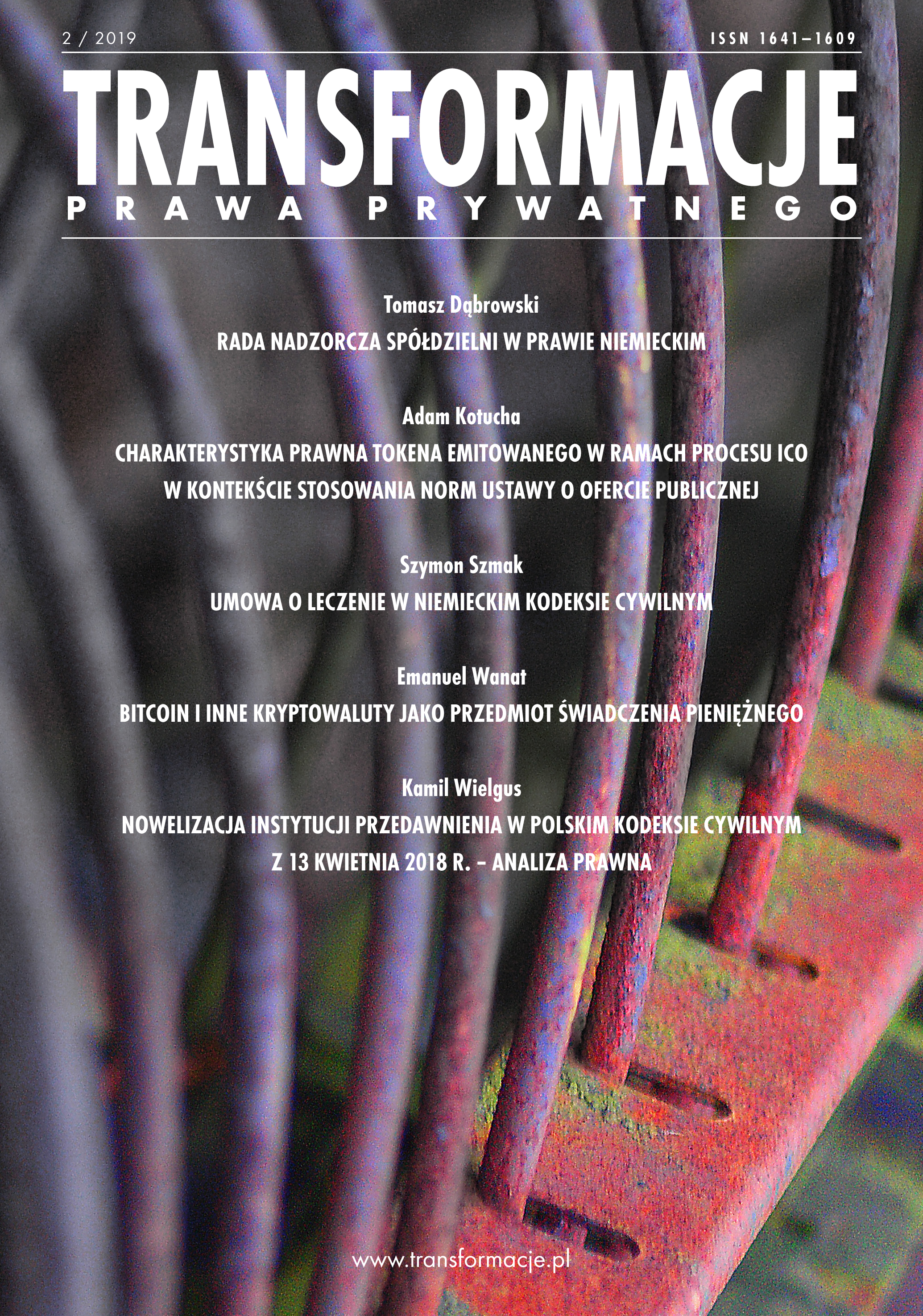Abstrakt
The Initial Coin Offering process (further: ICO), sometimes referred to as the ?Security Token Offering?, is a technological and financial innovation that allows funds to be collected for investment purposes, bypassing state borders and jurisdictions using the Blockchain technology, i.e. a technology that contributed, among other things, to the success of virtual currencies. The ICO process can be most easily defined as ?the method of acquiring funds for new projects using cryptocurrencies?, although economically speaking, contrary to the cryptocurrencies, digital tokens are broadcasted by centralized entity and distributed among the investors, in exchange for specific benefits in the future. The legal nature of the digital token, issued within an ICO, raises a lot of controversy. It is also a challenge for regulators from around the world. In the opinion of the author, however, it is impossible to classify (in the Polish legal order) a digital token as a security. This concept is influenced by the following circumstances: the concept of a closed catalog of securities included in the polish Public Offering Act, the difficulty of qualifying a digital
token as a security issued under the freedom of contracting parties, and even difficulty in qualifying securities issued under freedom of contracting parties, as being regulated on the public market. It is also difficult to qualify a digital token as only an element of certain
factual activities, benefits of the parties concluded on the basis of freedom of contracting or promising act as a public promise institution. The legal nature of the token issued within ICO, and in particular, although not exclusively, so-called the ?utility token? seems to reveal
a strong similarity to the legal nature of ?legitimation marks?. However, the difference is that we are dealing with a legitimation mark being an object of trade (occurring ?in circulation?). The adoption of this structure seems to be the most consistent with the actual state of the
ICO model, while preserving the legal protection of the ICO process? participants.


